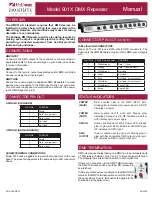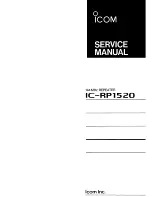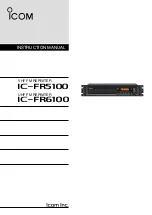
4
CLEANING & MAINTENANCE GUIDE FOR
PAW - DEC - SL SERIES HEATERS
R
egular maintenance on an electric wall heater will prolong the life of
the product and keep it operating safely. Heaters should be cleaned and
inspected every 6 months. This guide will show in detail how to properly
clean and maintain your King electric wall heater. It will also show when
parts or perhaps the entire heater should be replaced. Listed below are
step by step instructions for cleaning and maintaining the PAW Series
Wall Heater.
WARNING:
Take extreme caution when
working with electrical heaters. Turn off
the electrical power to the heater before
removing the grille of the heater. Lock,
tape or tag the circuit breaker so that the
power cannot be turned on accidentally
while working on the heater.
1. A
fter the power is turned off, remove grille using a #2 square drive
or a #2 Phillips head screw driver.
DO NOT remove heater interior
and wall can from wall!
Clean grille before reinstalling.
KING ELECTRICAL MFG. CO. · 9131 10TH AVE SOUTH · SEATTLE, WA 98108
2. U
se a soft bristled brush (1" to 2" wide) such as a paint brush to
remove any contaminants from the fan cage. Also spin the fan by hand
to make sure that it spins freely. If it feels like the motor is binding see
instructions below for oiling motor.
To clean heater, start by using a vacuum cleaner nozzle in the blow
out mode.
4. V
acuum out any material in the squirrel cage by placing the vacuum
nozzle close to the fan cage. Be careful not to bend the squirrel cage
because it could become out of balance if deformed.
T
he useful life on a PAW - DEC - SL Series Heater depends on the
amount of use, environment, and how often it is cleaned and maintained.
Heaters operated beyond their useful life are more prone to problems.
For example, when a motor slows down due to wear or lack of cleaning
it reduces the CFM and can cause the heater to overheat, tripping the
limit control. The limit will cycle the heater on and off. It is much safer to
fi
x the cycling heater before it fails. Heaters produced after 1992 have
a light which turns on when the limit trips. Heaters prior to that do not
have the light and are therefore more dif
fi
cult to detect a cycling occur-
rence. One way to tell is by listening for the click that is made when the
limit trips. With regular inspection and maintenance, your heater will
operate safely and ef
fi
ciently. Heaters manufactured after 2003 use a
manual limit and do not have a light.
3. T
o clean the element, point the nozzle at the element as shown on
the diagram and blow the dust out. This will dislodge any contaminates
caught on the heating element. Compressed air blown onto the element
works well also. If you have another vacuum, you can blow out from the
bottom and suck the debris from the opening at the same time which
will minimize dirt and lint being blown into the room.
5. A
fter removing contaminates lubricate the motor shaft and bearing
with a few drops of S.A.E. 20 synthetic oil at the locations shown.
Do
not use WD-40.
If the motor does not spin freely after oiling, it should
be replaced. Newer models have capped bearings and cannot be oiled.
Inspect the limit and look for signs of overheated wires and parts that
may need to be replaced.
paw-dec-sl.indd : 8/09























